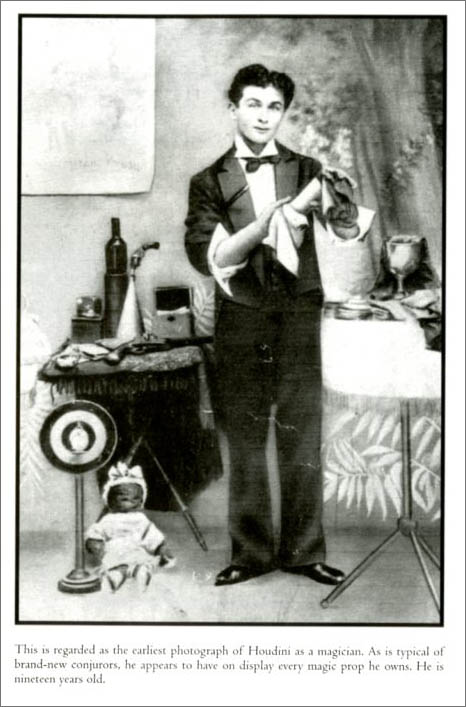
A FEW OTHER EVENTS FOR
MARCH 24:
- It’s the birth date of Mary Stolz (1920–2006), Belling the Tiger and Bill Cleaver (1920–1981), Where the Lilies Bloom.
- On this day in 1900, New York City Mayor Robert Anderson Van Wyck breaks ground for underground a “rapid transit railroad” to connect Manhattan and Brooklyn. The subway is born. Read Subway by Christoph Niemann; Subway by Anastasia Suen, illustrated by Karen Katz; The Subway Sparrow by Leyla Torres; and The Cricket in Times Square by George Sheldon, illustrated by Garth Williams.
- And, it’s National Chocolate Covered Raisins Day. Read How Do You Raise a Raisin? by Pam Muñoz Ryan, illustrated by Craig Brown.
On March 24, 1874, Harry Houdini was born in Budapest, Hungary. Some figures from history endlessly fascinate adults—and some remain perpetually interesting to children. Certainly Harry Houdini, magician, escape artist, performer, actor, and film producer, has garnered his share of biographies for children over the years.
Newbery Award–winner Sid Fleischman, in one of his last and best books for children, Escape! The Story of the Great Houdini, crafted a biography ideal for eight- to twelve-year-olds about his childhood idol. During his California boyhood he met and was greatly influenced by Houdini’s widow, Bess. Fleischman himself pursued card and magic tricks—although he was most spellbinding in his writing. His biography of Houdini includes information not only about the great magician but also Sid Fleischman himself: “I used to read palms, which is pure bunk, but it gave me a chance to hold a girl’s hands.”
Born Erhich Weisz, Houdini invented everything about himself —including his name. His happiest years as a child were spent in Appleton, Wisconsin. Later, on the road, he found employment whenever he could—including being “The Wild Man” in a cage. While in Europe, Houdini gained fame as “The Handcuff King.” He would go to local police stations, have them lock him in a cell, and then escape. The publicity brought hundreds to theatres to watch him perform.
In 1900, weighed down with chains and manacles, he jumped off a bridge in Dresden, Germany. In 1911 he had himself placed in the body of a sixteen-hundred-pound sea monster found off Cape Cod, and in 1912 he premiered his greatest escape act at Circus Busch in Berlin. Lowered into a glass-fronted water-filled cell, upside down, Houdini hung with his ankles in clamps. Then he miraculously freed himself from this water torture cell. As Fleischman describes these incidents, he has a sure sense of Houdini as a man and such an understanding of magic and magic tricks that the reader feels as if they have spent a day with Houdini, getting to know who he was and what he did.
Before Fleischman’s death in 2010, I was able to sit with him at dinner and watch him perform tricks—with a glint in his eye and a sure feeling for the fun we were all having. Since then, I have been rereading his books to be reminded of his genius. If you haven’t read the Fleischman cannon, Escape! is a great place to begin. It will make you, and the children in your life, long to read other books by him.
Here’s a passage from Escape!:
He grew up in a house stuffed with books and alive with learning, impoverished as it may have been. “My father had reared me in the love of books,” he wrote. Later, as a show-business headliner, he traveled with a specially built bookcase stuffed with a hundred or so books.
Houdini had learned to educate himself. He never took a magic lesson. He was an autodidact—one who teaches himself. He trained himself in the difficult card sleights he needed. While never tested, he brought to each succeeding challenge an I.Q. that must have been lofty.Â
Â
Â
Originally posted March 24, 2011. Updated for .







Such a fun read! In December I was checking out a bunch of young adult fiction books at the library for a project, and I couldn’t stand not having something non-fiction to balance that out. Luckily for me, I happened to snatch up this biography, and I’m so glad I did. I love how Fleischman’s nonfiction is just as (if not more) entertaining than reading fiction!i
Lovely review, Anita, as always. Sid Fleischman wrote such hilarious, breathless adventures–By the Great Horn Spoon and Jingo Django are titles I now want to go back and reread, thanks to you. And now I’m thinking about his fabulous tall tales about a prolific one-acre farm, the McBroom series, including McBroom Tells the Truth, and how Farmer McBroom always assembles his 11 kids, calling, “Will, Jill , Hester, Chester, Peter, Polly, Tim, Tom, Mary, Larry, and Little Clarinda!” Oh, how I love those books. As for the first-rate Houdini bio, even the photo captions are marvelous. Here’s my favorite: “Wrapped like a pot roast, Houdini is about to make an underwater escape” You know how you always remember great lines from books and they become your own personal mantras? This was the first time I committed a photo caption to memory! Long live Erich Weiss!
Judy: Thanks for this comment. I always love hearing people’s favorite lines from books.